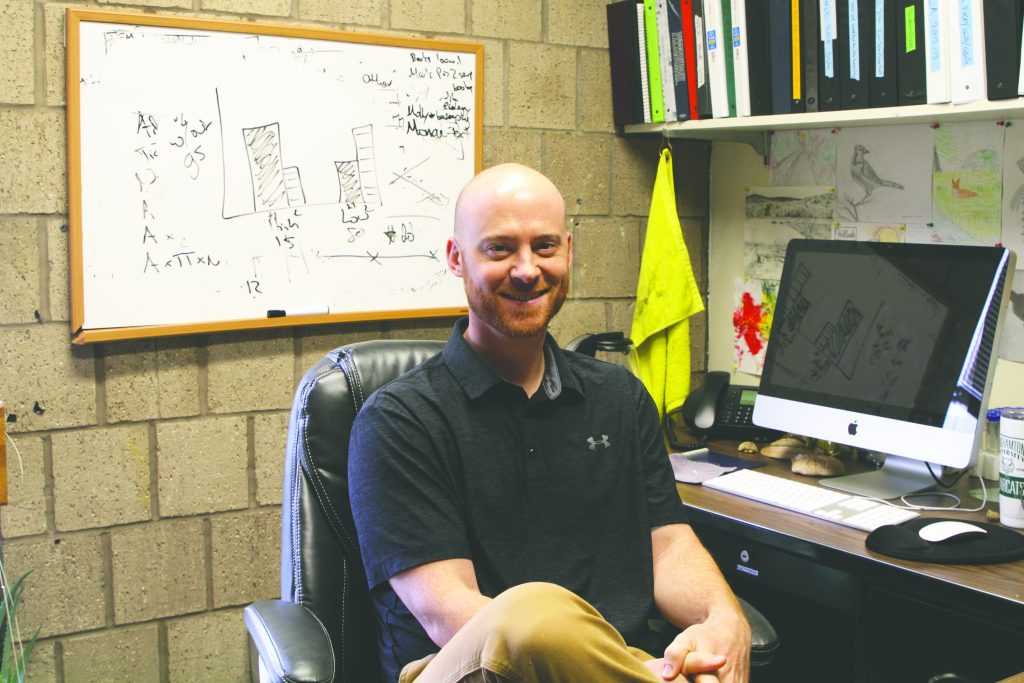Road salt and metal have a direct effect on the development and survivability of local amphibians, according to a recent research paper published by a Binghamton University professor.
George Meindl, lead author of the paper and a visiting assistant professor of environmental studies, said he chose to pursue this stream of research to improve local conservation efforts by understanding how changes humans make to the environment affect wildlife.
“Research and observations from our own Nature Preserve on campus have recently highlighted two ways that people are altering natural ecosystems — the introduction of invasive species and road salt runoff,” Meindl said. “Therefore, using natural areas on campus, my students and I can ask how people are altering natural ecosystems, and then think of better management strategies to make sure these places aren’t completely degraded.”
According to the National Weather Service, annual snowfall in Binghamton totals around 83 inches with an average winter temperature hovering just below freezing. Although the call for dispensing road salt may be a beneficial safety precaution for those driving and walking to classes, Meindl’s lab shows the negative effects it can have on the aquatic ecosystem.
“Most amphibians can absorb water and breathe through their skin, so salamanders and frogs are both at risk from excessive road salt application,” Meindl said. “Studies on campus have found elevated salt concentrations in water adjacent to roads, so we know salts are running off of roads and accumulating in amphibian habitats, which is a concern. Thankfully, the University has listened to the concerns of environmental scientists on campus and reduced the amount of salt they use on roads that our salamanders cross during their annual migration.”
Meindl found that invasive species of wetland plants are also responsible for modifying ecosystems by changing water chemistry, which poses a threat to some amphibian species.
Meindl’s lab studied the native northern leopard frog and the non-native African clawed frog. They tested the effects of different concentrations of metals on the frogs. They used the time to hatching (TTH) and time to death (TTD) as measurements for determining susceptibility to sodium chloride, which is used as road salt, and metals including calcium, potassium and manganese.
They found that an increase in metal concentration led to the acceleration of TTH in the African clawed frog, which occurs because of stress. However, when given sodium chloride, the African clawed frog was less susceptible. The northern leopard frog showed no change in TTH, but was more susceptible to the sodium chloride with a decreased TTD.
The researchers proposed that the varied tolerances in both these amphibians may be due to differences between being a native and invasive species. They were also able to provide evidence that sodium in excess can result in premature mortality of some aquatic species.
Diana Knoell, a senior majoring in environmental studies who helped run several experiments, said taking Environmental Studies 430: Plant Ecology with Meindl gave her the opportunity to get involved.
“Meindl is one of the best, most enthusiastic, passionate professors on campus,” Knoell said. “When a professor really loves their topic, it makes learning even more captivating. For the course Plant Ecology, we helped set up, run and analyze the results from this experiment. [Meindl] is so warm and open to questions while also taking everyone’s feedback to heart.”
George Homsy, program director of sustainable communities and an associate professor of public administration, wrote that he is proud of the work performed by the students and faculty.
“Outstanding,” Homsy wrote in an email. “Great teaching, great research. [The] epitome of what we want the students to get in this area and how we need to better understand the complexity of the systems we and our amphibian neighbors live in.”
Meindl said invasive species are responsible for just a small part of the destruction being done to the ecosystem, and limiting nonrenewable resources can also help minimize the human footprint.
“A great challenge is understanding how all of these stressors affect the natural environment, and then using this information to guide policy development that protects our planet’s natural resources,” Meindl said. “Studies like this will help to generate data that can guide more responsible resource use and behavior by people.”



